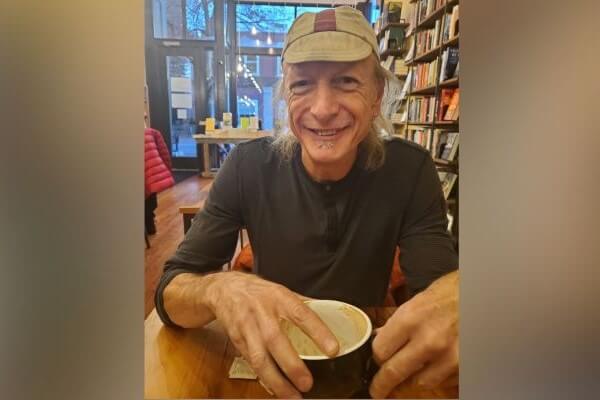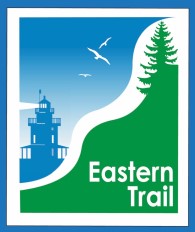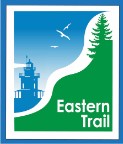
Saco Bay News | Randy Seaver, Contributing Writer | Mon, Nov 06, 2023
A pedestrian was struck and killed by a motorist on Spring Street in Saco last week. Just a few months before that tragic accident, another pedestrian was struck and killed near the intersection of Water and Main streets in Saco.
These tragedies underscore Patrick Conlon’s hope that both Biddeford and Saco will become the first communities in Maine to adopt the Vision Zero initiative. Vision Zero is a global program that began in Sweden as is now sweeping across many communities in the United States. The goal of Vision Zero is to improve safety and to eliminate traffic deaths: a vision for zero traffic deaths.
Conlon, 62, moved to Biddeford from New Jersey a few years ago. He discovered the area while visiting his wife’s family in the Ocean Park area several years ago. “The more I looked around, the more I liked this area,” he said. “I really liked the vibe I felt while biking along Main Street in Biddeford.”
For many years, Conlon worked in the publishing industry as a graphic artist for publications such as Rolling Stone magazine and the Wall Street Journal. Today, he works as the Trail Manager for the Eastern Trail, a connected series of hiking, biking and walking trails that extends from Kittery to Bug Light in South Portland.
Although nearly two-thirds of the 62-mile Eastern Trail runs along roadways, Conlon is hoping that the trail can be expanded over time and rely less on public roads and highways.
To say that Conlon is an avid bicyclist would be a gross understatement. Conlon literally rides his bike everywhere, describing himself as belonging to the “fearless” category of bicyclists.
Your job is to maintain several miles of trails between Kittery and South Portland, and you take your bike to work?
“Oh yeah. (Smiles) I bike whenever I can. I typically carry tools in my (rear-wheel bags) such as a folding rake, a chainsaw and pruning shears.”
The Eastern Trail is basically southern Maine’s portion of the much larger East Coast Greenway, right?
“Exactly, so the East Coast Greenway runs along the Eastern seaboard from Florida to Maine, and it continues along much of the Eastern Trail, all the way to Calais.
How did the Eastern Trail become a reality?
(Laughs) “Well, you can pretty much thank the beavers for the creation of the Eastern Trail. What many people don’t know is that the Eastern Trail pretty much follows on top of the underground right-of-way that belongs to Unitil, a gas and oil company. Previously, the right-of-way belonged to the Eastern Rail Line.
“Basically, many people used to hike along a section of that trail through the woods in Arundel. The gas company benefitted from having people keeping eyes on the trail. Well, one year the drainage ditches along the trail were flooded because of beavers building a dam.
“We went in to fix the problem and ever since, we have had co-access to the trail. So, it was the beavers that made us realize that a lot of people enjoyed the trail and that it could benefit from some routine maintenance.”
You’re a champion of creating more bicycle lanes in the Biddeford-Saco area. What’s the stumbling block to making that happen?
“Actually, we just have to decide to make it a reality. We’re making some progress, but we have a long way to go. It’s one of those things that challenges the status-quo. We have to be able to step back and see the much larger picture. We can do it incrementally.
“Every time we repave a section of road, why not mark off a lane on that roadway? If it’s too narrow, maybe just widen the road a bit. We’re already there. Already spending money to fix the road, why not add a bike lane?”
You say more bike lanes will encourage more people to ride bicycles and reduce traffic problems.
“That’s right. As it is now, there are many areas where it’s just not safe to ride a bike. Basically, there are three categories of bicyclists. The first category is the ‘fearless’ group. That’s the category I fit into. We basically will ride our bikes anywhere, even along major roadways such as Rte. 111 and outer Route One. The second category is the people who will likely never ride a bike, regardless of what we do. The third category, which I believe is the largest group, is made of people who are interested in biking as alternative transportation, but they find current traffic patterns to be daunting.”
It’s not uncommon to hear motorists complain about bicyclists not following the rules of the road.
I understand those complaints and concerns. Unfortunately, some cyclists don’t follow the rules of the road and that can create dangerous situations. I believe we should be teaching bicycle safety and regulations in school.
“There are so many benefits to cycling. You have better health outcomes; reduce carbon emissions and you actually improve local economies. We, especially in the United States, live in a society that has been basically indoctrinated with the belief that cars should be the de-facto mode of transportation.
“Again, I think we need to step back and look at the bigger picture. You always have the option of shopping more frequently and buying fewer groceries with each trip. People who live in more urban areas tend to shop that way. We have to be willing to re-examine our priorities.”
You say the city of Saco is a step ahead of Biddeford in creating a plan to encourage bicycling and walking.
“I would like to see Biddeford commission a master bike plan so that we can start planning for the future in a more cohesive way. Just having it on paper would be a huge first step. And we should look at both cities together.
“You have to start somewhere, and right now we’re not really doing anything. We need a guide to get us where we want to be. Saco has already established a Bicycle Pedestrian Advisory Committee. We need to follow their lead and join forces with them. I strongly, so strongly, support creating a better connection between the two cities for both pedestrians and bicyclists.
“As our populations increases, our traffic is going to increase. We absolutely need to look at ways to improve our traffic and make public safety a top priority.”
You can read the full article online here.











